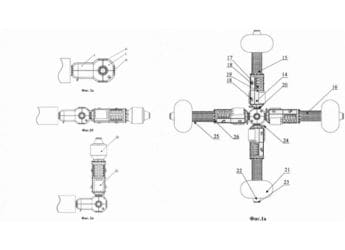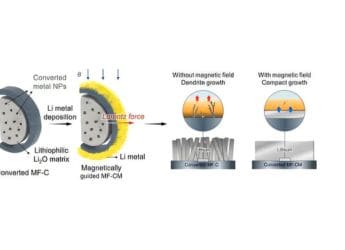- Home
- Science
- Science News
- NASA F 15 Flights Validate Supersonic Tools for X 59 Quiet Flight Quesst Mission
NASA F-15 Flights Validate Supersonic Tools for X-59 Quiet Flight Quesst Mission
NASA's Quesst mission gains momentum as F-15s confirm X-59 shockwave measuring tools.

Photo Credit: NASA/Jim Ross
NASA’s F-15s test shockwave tools for upcoming X-59 quiet supersonic flights
High above the Mojave Desert, NASA's two F-15 jets completed a pivotal series of May flights to validate airborne tools essential for the agency's Quesst mission, aimed at enabling quiet supersonic travel. Flying faster than the speed of sound, the jets replicated the conditions under which NASA's experimental X-59 aircraft will fly. The campaign tested shockwave sensors, geospatial guidance systems, and schlieren imaging tools designed to detect and visualise the aircraft's sonic “thump”—a softer alternative to the traditional boom—when the X-59 cruises at Mach 1.4 and above 50,000 feet.
NASA's F-15 Validation Confirms Readiness of X-59 Tools for Quiet Supersonic Flight Research
As per NASA's Armstrong Flight Research Centre, the dual-jet validation effort was led by the SCHAMROQ team, which transformed an F-15D from a combat aircraft into a research platform. Along with an F-15B, the aircraft were used to perform simultaneous flight operations—called dual ship flights—to validate three core systems: a near-field shock-sensing probe, an airborne schlieren photography setup, and a GPS-driven Airborne Location Integrating Geospatial Navigation System (ALIGNS). These efforts collectively confirm the systems' readiness for X-59 data capture.
Cheng Moua, NASA's project lead for SCHAMROQ, likened the series to a “graduation exercise”, where all tools were tested in their final configuration. The schlieren system, in particular, demanded intense precision, requiring a high-speed handheld camera to track the X-59's airflow against the sun's backdrop while the aircraft flew through a tight 100-foot alignment corridor.
The successful validation shows that NASA's specialised tools are ready to record the X-59's sound signature. This is a key step towards establishing that it is conceivable, quantifiable, and repeatable to fly supersonic over land without making too much noise. The information will help determine the future of commercial aviation regulation and technology, making the promise of quicker, quieter flight travel more likely.
Get your daily dose of tech news, reviews, and insights, in under 80 characters on Gadgets 360 Turbo. Connect with fellow tech lovers on our Forum. Follow us on X, Facebook, WhatsApp, Threads and Google News for instant updates. Catch all the action on our YouTube channel.
Related Stories
- Samsung Galaxy Unpacked 2025
- ChatGPT
- Redmi Note 14 Pro+
- iPhone 16
- Apple Vision Pro
- Oneplus 12
- OnePlus Nord CE 3 Lite 5G
- iPhone 13
- Xiaomi 14 Pro
- Oppo Find N3
- Tecno Spark Go (2023)
- Realme V30
- Best Phones Under 25000
- Samsung Galaxy S24 Series
- Cryptocurrency
- iQoo 12
- Samsung Galaxy S24 Ultra
- Giottus
- Samsung Galaxy Z Flip 5
- Apple 'Scary Fast'
- Housefull 5
- GoPro Hero 12 Black Review
- Invincible Season 2
- JioGlass
- HD Ready TV
- Laptop Under 50000
- Smartwatch Under 10000
- Latest Mobile Phones
- Compare Phones
- Huawei Nova 15
- Huawei Nova 15 Pro
- Huawei Nova 15 Ultra
- OnePlus 15R
- Realme Narzo 90x 5G
- Realme Narzo 90 5G
- Vivo S50 Pro Mini
- Vivo S50
- Asus ProArt P16
- MacBook Pro 14-inch (M5, 2025)
- Huawei MatePad 11.5 (2026)
- OnePlus Pad Go 2 (5G)
- Huawei Watch 10th Anniversary Edition
- OnePlus Watch Lite
- Acerpure Nitro Z Series 100-inch QLED TV
- Samsung 43 Inch LED Ultra HD (4K) Smart TV (UA43UE81AFULXL)
- Asus ROG Ally
- Nintendo Switch Lite
- Haier 1.6 Ton 5 Star Inverter Split AC (HSU19G-MZAID5BN-INV)
- Haier 1.6 Ton 5 Star Inverter Split AC (HSU19G-MZAIM5BN-INV)

















